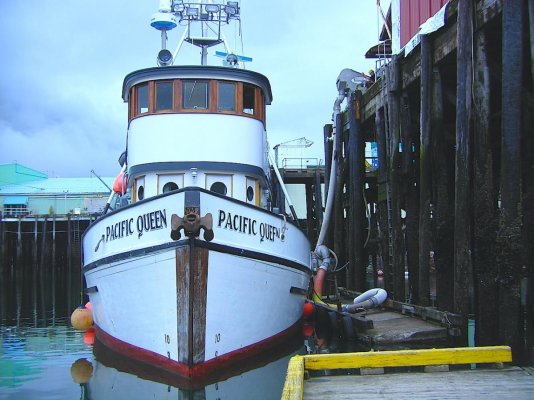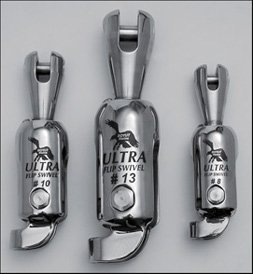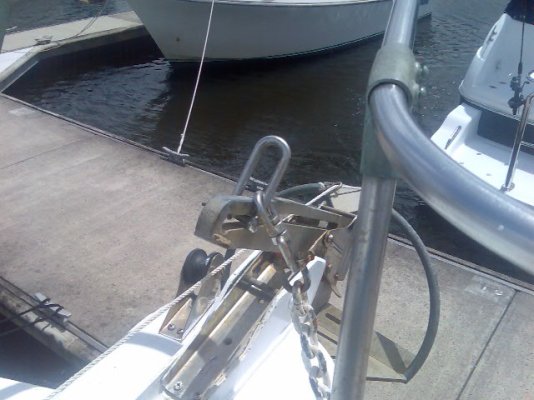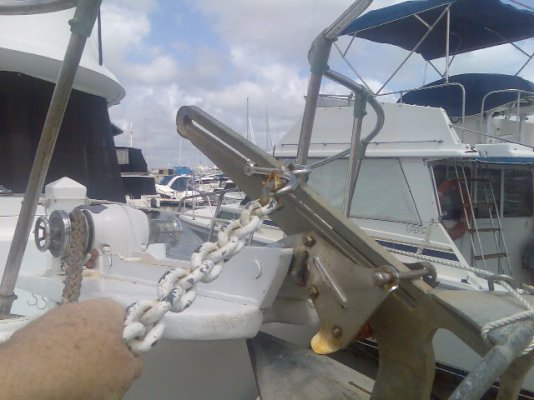This is not to cast aspirations on your anchor - so do not get defensive

. But you say when you retrieve your anchor that it is not aligned with the bow roller. Can you be more explicit.
.
Sure. And I just realized that "aligned" was not the best word to use. "Oriented" would have been more accurate.
The same situation existed with the Bruce that we had before the Rocna, so in our case it's got nothing to do with the anchor brand or design. In both cases, the chain has been aligned correctly between the wildcat and the anchor with the anchor in its stowed position.
A photo or video would be far more effective in showing you what I mean, but I'll try with as few words as possible.

I suspect the same situation exists for everyone regardless of whether they use rope or chain as their rode.
When the anchor is hanging on the chain below the pulpit, it's anyone's guess how it will be hanging in orientation to the stem of the boat and the pulpit above it. "Random rotational positioning" is a made-up phrase that perhaps applies.
Most of this is due to how the chain is lying on the bow roller above the suspended anchor, some of it may be how the chain links decided to "hold hands" at that particular time, and some of it is due to the slop in the chain-to-shackle-to-anchor connection.
The cure, at least for us, is simple. Our generation of GB36 has a relatively short pulpit, and my position at the windlass foot switches is such that I can easily reach down and grab the chain between the aft and forward rollers over the pulpit channel.
So if the anchor has decided to hang in a rotational position that would bring it up to the bow roller out of orientation with the roller--- in other words the anchor shank is presenting its side to the roller or its back--- I simply reach down, grab the chain, and give it a twist one way or the other while pulling up and letting down on it so the chain is forced to "flop over" on the bow roller as it moves a few links back and forth.. When it does this, it re-orients the anchor hanging down below.
Once the anchor has re-oriented itself and is hanging more or less in the proper orientation to the bow roller, I finish the pull up to the pulpit and stop the windlass just as the shank moves into the bow roller. Then I reach forward, grab the chain, and haul the anchor up over the roller by hand. Holding the anchor in its stowed position, I use the foot switch to use the windlass to take up the slack in the chain.
The windlass is more than powerful enough to haul the anchor over the bow roller, but the Lofrans Tigres is a fairly fast windlass and it's either on or off; there is no variable speed control on it. So I prefer to pull the anchor over into its stowed position by hand rather than have the windlass yank it over the roller and slam it into its final position.
A swivel would be of little or no value in our situation. In fact, we used to have one-- first installed incorrectly and then correctly after I read Earl Hinz's book

--- and it made no difference to how the anchor (the Bruce in this case) oriented itself to the pulpit when it came up out of the water. I still did the twist-the-chain thing to orient it, which for us is far faster than reaching over the rail and pulpit with a boat hook and trying to rotate the anchor on the swivel.
But..... for people with larger boats and/or much heavier anchors, the twist-the-chain thing and haul-it-over-the-bow-roller-by-hand thing is out of the question. So in this case a strong, properly-installed swivel would be the smart way to go.
FWIW, while we believe the fewer components in an anchoring system the better, the one swivel I've seen that I would consider using if we needed one is the WASI Ball.






